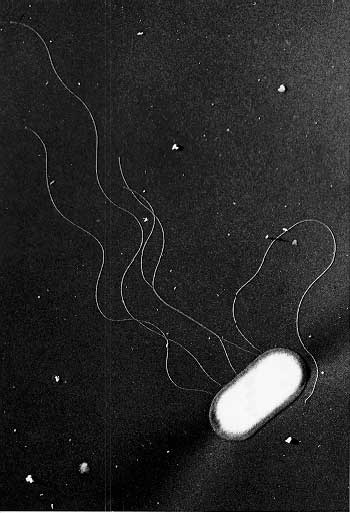Aberdeen researchers today (Thursday, October 11) launch a unique collaboration which aims to reduce the risk of a potentially deadly bug which is particularly prevalent in North East Scotland.
Grampian has one of the world's highest rates of E. coli O157. Last year (2006) 53 people were struck with the bug which is around 10 in every 100,000 local people.
Now the area's problem will be scrutinised by leading scientists who will spend the next three years fact finding and developing guidance for UK authorities on how to beat the bug.
Today the University of Aberdeen officially launches a new partnership which for the first time pulls together social scientists, microbiologists, economists, food scientists, ecologists and medical and geography experts to examine the problem in rural areas.
The collaboration brings together the University of Aberdeen; the London School of Hygiene and Tropical Medicine; the University of Manchester; the University of Bangor; the Institute of Grassland and Environmental Research, the Veterinary Laboratories Agency and RIVM National Institute for Public Health and the Environment, Bilthoven, The Netherlands.
Thanks to a £1.3M grant from Rural Economy and Land Use the scientists will compare Grampian's situation with a similar rural stretch of North Wales which has a relatively low incidence of E. coli O157 cases.
Researchers will try to find answers to a wide range of unknowns such as why agricultural workers appear to be less susceptible to infection than urban populations.
They will also speak to key stakeholders such as farmers, rural workers, residents, food processors and tourists to establish how risk of this kind of infection is perceived, communicated and managed.
The cost to the UK economy of E. coli O157 will also be examined.
Principal investigator Professor Ken Killham, Chair of Soil Science at the University of Aberdeen, said: "We are combining world leading expertise across an exciting range of disciplines to reduce the risk of E.coli O157 to UK rural communities.
"E. coli O157 can have a devastating impact on the lives of those who contract the bug.
"What our study will do is take a unique multi-disciplinary approach in order to better understand the E. coli O157 risk in the rural environment where many infections occur.
"Greater understanding will enable our collaboration to devise measures that could be implemented to reduce that risk to rural communities."
Dr Norval Strachan, a Senior Lecturer within the University of Aberdeen's Department of Plant and Soil Science, who has studied E. coli for many years, is also among the collaborators. He added: "This grant offers an exciting opportunity to study the different mechanisms by which humans can become infected and to determine the feasibility both socially and economically of strategies to reduce the risk of infection both from food and the environment."
In Grampian the incidence of E. coli O157 is 1.7 times higher in rural areas compared with urban environments. It is also more common where there are high populations of cattle and sheep.
Young children and the elderly are particularly at risk from the bacterium which can live in the ruminant gut and is shed in their faeces.
Infection can come via contaminated food such as burgers which are not fully cooked or contaminated salad. It can also be spread through contact with animals. The bug can also find its way into water such as streams and wells.
The North East's high number of private water supplies – which has a greater percentage than anywhere else in the UK - is thought to be one of the reasons cases here are more frequent.
The University of Aberdeen was involved in the analysis following the world's worst recorded E. coli O157 outbreak when 21 people died after eating contaminated meat from a butcher in Wishaw in Lanarkshire in 1996. Aberdeen researchers from this new partnership have alsobeen involved in subsequent outbreaks including the one in 2000 when 20 members of a Scouting party were infected after camping in New Deer in Aberdeenshire.
Professor Killham believes that the huge profile given to E. coli by well known University of Aberdeen microbiologist Professor Hugh Pennington – who led the public inquiry into the 1996 Lanarkshire outbreak and also chaired a recent public inquiry into Wales' worst E. coli outbreak which claimed the life of a five-year-old boy and infected 158 people, mainly children – helped ensure Aberdeen led the new collaboration.


